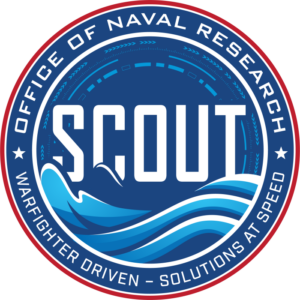The Department of Navy’s Office of Naval Research (ONR) is seeking industry participants in a series of experiments to help the U.S. Pacific Fleet perform various missions better using unmanned systems and other technologies in the Pacific SCOUT experimentation series
A new Request for Proposals (RFI), first issued on July 25, is looking at technologies and capabilities to support missions in the area of responsibility , including using unmanned systems “at scale to support lethal and non-lethal missions” over one to three years.

The notice said the missions will also require deploying advanced sensor grids and use of unmanned semi-autonomous systems as part of long-range kill chains “as well as adoption of next generation decision support and control systems to link all elements of the kill chain.”
It underscored the Navy is looking for supporting technologies that particularly work in the Pacific Fleet area of operation that is graphically dispersed and has forces deployed in large but controlled numbers but also able to interface with a “common decision support and command and control system.”
ONR first unveiled this SCOUT campaign effort in March in the lead up to the Navy League’s annual Sea Air Space Expo.
At the time, the office said SCOUT is a multiagency campaign “to identify new ways to bring novel capabilities to warfighter challenges, experiment with them in realistic operating conditions, and operationalize them in partnership with the fleet and force. It is committed to collaborating with industry to curate existing problems and accelerate the incubation of innovative, promising solutions that align to those problems.”
Now the notice said ONR is interested in learning about technologies that will help the U.S. Pacific Fleet perform its missions to keep sea lanes open, deter aggression, provide regional stability and support humanitarian relief operations.
The Pacific SCOUT series is focused on four problem sets: long-range fires, naval operational architecture, contested logistics and counter-C5IRST.
“In order to perform these missions, information will be collected from many sources to generate actionable intelligence so that limited assets can be deployed as required in order to systematically and effectively accomplish all mission requirements. In so doing, PACFLT will work across the Joint force, with allies, partner nations and other US agencies to develop, analyze, and vet intelligence information,” the notice said.
The RFP specified that the long-range fires topic area specifically seeks to defeat enemy amphibious forces via “cost-effective lethal asymmetric capabilities in 1 to 3 years.”
The asymmetric warfare capabilities area will consider using unmanned systems and mines for offensive effects or to close the kill chain in long range fires, while other avenues include seabed warfare and undersea offensive capabilities and tactical-level command, control and communications (C3).
The notice said the naval operational architecture topic is focused on developing “agile, resilient, and secure Joint and Coalition fires network/architecture in 1 to 3 years.”
It said the Navy seeks targeting, engagement, and assessment capabilities to close the “Find, Fix, Track, Targets, Engage, & Assess (F2T2 EA) cycle,” sub-surface communications to aid offensive operations in a contested environment an target weapon and weapon to weapon pairing for increased lethality.
The Navy wants to use the contested logistics topic to better deliver intra-theater logistics to sustain combat operations in a “highly contested environment.”
Elements of this topic include logistical distribution optimization decision aids, ship-to-ship capabilities to allow logistics support and sustainment operations between inter and intra-theater, ship-to-shore capabilities that allow frequent resupply of ashore forces, solutions for converting containers to break bulk assets while afloat, and secure communications on commercial maritime vessels.
The last topic, counterC5IRST, aims to reduce risks to the manned force over the next three years. ONR specifically is looking for technologies that prevent maritime forces, including logistics forces from being targeted as well as any technologies that reduce the effectiveness of adversary high-end weapon inventories.
The Navy said the office is using this RFP to learn about technologies with a technology readiness level of six or higher.
Ultimately, standout systems will be invited to participate in a Pacific SCOUT experimentation series running from fiscal years 2023 – 2024. The experimentation will start by demonstrating technology in a limited technology assessment to government technology assessors at the respondent’s preferred location.
The technologies that succeed past that phase will then be invited to participate in a Limited Objective Experiment (LOE) that is tentatively scheduled for February-March 2024, likely to occur in southern California.
The Navy said promising technologies that finish the LOE could then move on to an invitation for participation in an Advanced Capability Experiment (ACE) to occur in a location in the Indo-Pacific Command area of responsibility.
The notice said that Naval Surface Warfare Center Panama City Division (NSWC PCD) and Office of Naval Research – Global (ONRG) will host a virtual industry day event on Aug. 14 to help interested respondents better understand ONR’s experimentation campaign and four problem areas.